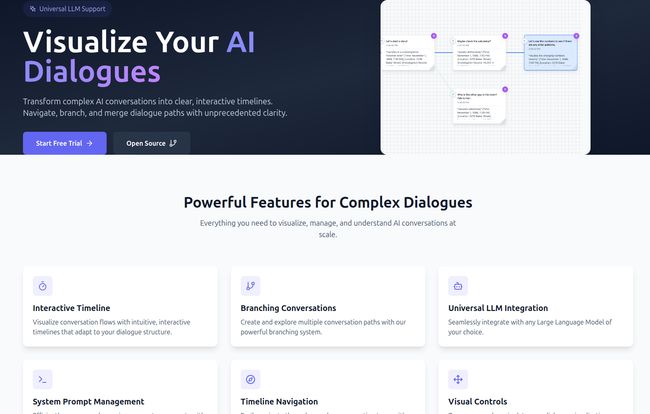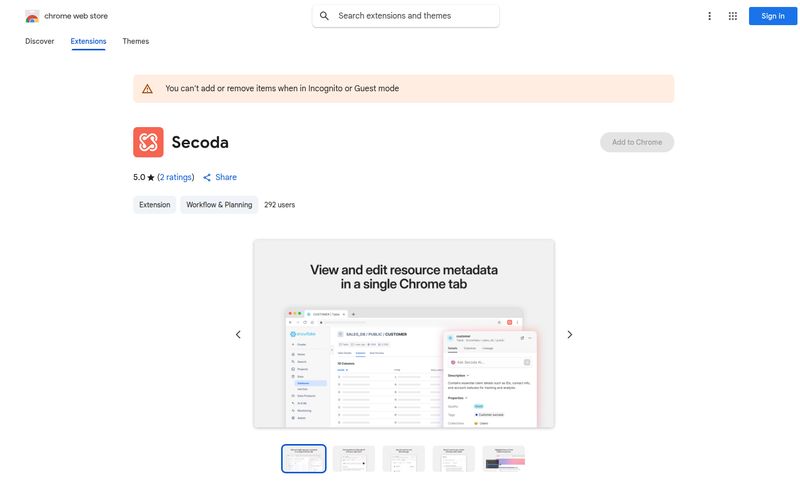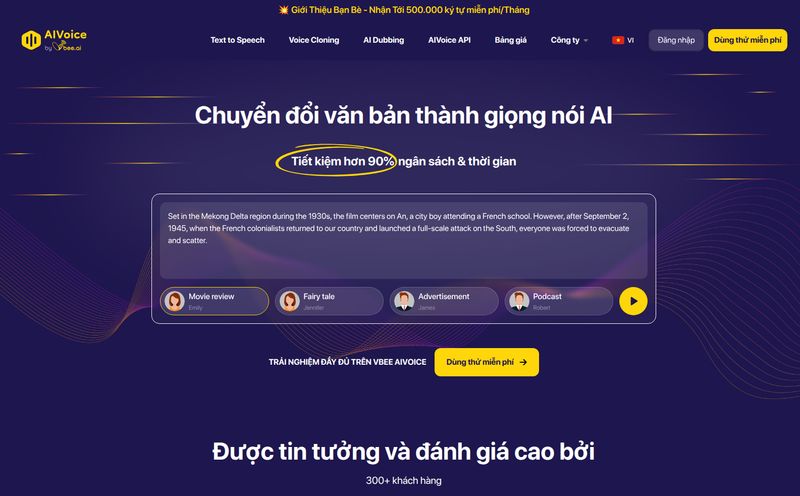If you’ve spent any serious time working with Large Language Models, you know the feeling. You’re deep into a conversation, trying to guide the AI down a specific path. You've tweaked system prompts, refined your instructions, and then... it goes off the rails. You find yourself scrolling endlessly up, trying to pinpoint the exact moment things went sideways. It’s a frustrating, chaotic mess that feels less like engineering and more like digital archaeology.
I’ve been there more times than I can count. Your screen becomes a wall of text, and tracing the logic feels like trying to untangle a ball of yarn after a cat has had its way with it. For a while, I just accepted this as the cost of doing business in the AI space. But recently, I stumbled upon a tool called Forking Path, and I have to say, it’s one of those ideas that’s so simple and brilliant you wonder why it didn't exist before.
So, What Exactly Is Forking Path?
Imagine a GPS for your AI dialogues. Instead of a single, messy, linear transcript, Forking Path turns your entire conversation into an interactive timeline. A visual map. You can see every turn, every prompt, and every response laid out cleanly. But here’s the kicker: you can create branches.

Visit Forking Path
Think about that for a second. You get to a critical point in the conversation. Instead of committing to one direction, you can create a 'fork' in the road. Explore one possibility. Then, you can pop back to that fork and explore a completely different path, all without losing your original context. It's like a choose-your-own-adventure book, but you're the author, and you can write all the endings at once. This, for me, is a game-changer for serious prompt engineering and debugging.
Why This Feels Different from Other Tools
We've seen a lot of AI wrappers and playgrounds pop up over the last couple of years. Most are just prettier UIs for OpenAI's API. Forking Path feels like it's built on a fundamentally more useful premise.
Finally, a Bird's-Eye View of the Chaos
The interactive timeline is the star of the show. Being able to zoom out and see the entire conversation tree is incredibly powerful. You can instantly spot where a tangent began or compare the outcomes of two different prompts side-by-side. It transforms the abstract flow of an AI chat into something tangible and manageable. No more endless scrolling. Hallelujah.
It Plays Nice with Everyone (Universal LLM Support)
This is a big one for me. Forking Path isn't locked into a single ecosystem. The documentation makes it clear that it supports any Large Language Model. Whether you're working with GPT-4, Claude 3, Llama, or some obscure open-source model you've fine-tuned yourself, you can plug it in. This kind of flexibility is essential for developers and researchers who don't want to be tied to one provider. It shows they understand how we actually work.
Version Control for Prompts? Yes, Please.
Okay, developers, lean in. Forking Path has what it calls "Version Control" with Git-like branching and merging capabilities. This is just... chef's kiss. If you've ever managed a complex software project, you know the life-saving power of Git. Being able to apply that same logic—creating branches for features (or in this case, dialogue paths), testing them in isolation, and then merging the best one back into the main conversation—is brilliant. It elevates prompt management from a messy notepad file to a proper, structured workflow. It's basically Git for conversations, and I am so here for it.
Built with Developers in Mind
While the visual interface is great, the real power for many of us will be the RESTful API. This means you can integrate Forking Path's timeline and branching logic directly into your own applications. You could build custom testing frameworks, advanced analytics dashboards, or even user-facing applications that allow people to explore different conversational outcomes. This isn't just a toy; it's a piece of infrastructure.
Now, this does come with a small caveat. To really harness the power of teh API, you'll need some technical knowledge. This isn't a tool for my grandma to chat with an AI. It’s designed for people building with AI, and that’s perfectly fine. It knows its audience.
Let's Talk Money: The Pricing Question
Here's where things get a bit mysterious. I went hunting for a pricing page and, well, couldn't find one. I even hit a '404 NOT_FOUND' page at one point, which is a relatable experience for anyone who's ever clicked around a new site. Happens to the best of us!
This usually means one of two things: it's aimed at enterprise clients with custom pricing, or they're still figuring it out. However, they have two massive buttons on the homepage: "Start Free Trial" and "Open Source". The existence of an open-source option is fantastic news. It means you can likely self-host and tinker to your heart's content, which lowers the barrier to entry significantly for developers and small teams. The free trial gives you a chance to see if it fits your workflow before you have to talk to a sales rep. I respect that approach.
Who Is Forking Path Really For?
After playing around with the concept and digging into the features, it's pretty clear who will get the most out of this tool. This is for:
- AI/ML Engineers and Developers: Anyone building applications on top of LLMs will find the API and version control incredibly useful for debugging and creating complex conversational logic.
- Prompt Engineers: If your job is to craft and refine prompts, the ability to visually branch and test different approaches in a non-destructive way is a massive workflow improvement.
- UX Researchers & Designers: For those designing conversational interfaces, this could be an amazing tool for mapping out user flows and testing how an AI responds to various inputs.
- Researchers: Studying AI behavior becomes a lot easier when you can meticulously document and compare different conversational pathways.
This isn't really for the casual user who just wants to ask an AI for a recipe. It's a professional-grade tool for people who are serious about building with and understanding language models.
My Final Verdict
Forking Path is one of the most interesting and genuinely useful AI dev tools I've seen in a while. It addresses a real, frustrating pain point that pretty much everyone in the field has experienced. It’s not just another shiny wrapper; it’s a fundamental shift in how we can manage and visualize AI dialogue.
The combination of a clean visual timeline, universal LLM support, and developer-centric features like version control and an API makes it a very compelling package. While the lack of public pricing is a small hurdle, the open-source option makes it accessible to all. It has the potential to bring some much-needed order to the beautiful chaos of AI conversations.
Frequently Asked Questions
What is Forking Path in simple terms?
Forking Path is a tool that helps you see your conversations with AI as an interactive map or timeline. Instead of a long text chat, you can see branches where the conversation could go in different directions, making it easier to manage and understand.
Does Forking Path work with any LLM like GPT-4 or Claude?
Yes, one of its main advantages is its universal LLM support. You can integrate it with virtually any large language model, whether it's from a major provider like OpenAI and Anthropic or a custom open-source model.
Is Forking Path free to use?
The pricing isn't listed publicly, which often suggests custom enterprise plans. However, it offers both a free trial and an open-source version, so you can try it out or even host it yourself without any initial cost.
Who is the ideal user for Forking Path?
It’s primarily built for technical users like AI developers, prompt engineers, and researchers who are building applications with LLMs or deeply analyzing their behavior. It's a power tool, not really meant for casual AI chat users.
What does 'branching' a conversation mean?
Branching means creating a split in the conversation to explore a different direction without losing your original place. For example, you could ask the AI to answer a question in both a formal and a casual tone by creating two separate branches from the same prompt.
How does the API integration help?
The RESTful API allows developers to programmatically control the conversation timelines. This means they can build the features of Forking Path directly into their own software, automated testing systems, or data analysis pipelines.



